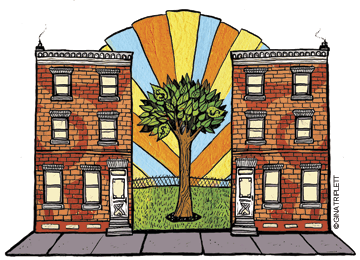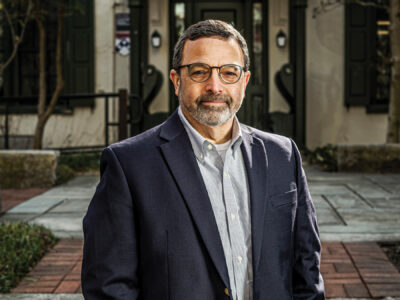
Community Revitalization | While it’s no secret that a little greenery can perk up a sagging stoop or improve the curb appeal of a house past its prime, a Wharton study conducted in Philadelphia’s New Kensington neighborhood shows that plantings on vacant lots can boost a community’s property values.
As populations have shifted from cities to outlying areas, the number of abandoned properties in U.S. industrial regions has grown significantly over the past few decades. To fight this problem, the New Kensington Community Development Corporation (NKCDC) paired with the Pennsylvania Horticultural Society (PHS) to clear derelict lots and “green” them by covering them with grass and trees. PHS then contacted Wharton to measure the direct impact of greening on neighborhoods.
Using house-sale data provided by the city and financial support from the William Penn Foundation, the study evaluated the effects of greening through techniques developed at Wharton’s Geographic Information Systems lab.
The results were positive: Vacant-land improvements caused surrounding housing values to jump by as much as 30 percent, and new tree-plantings raised property values by approximately 10 percent. In New Kensington (slightly northeast of Center City), these increases translated into a $4 million gain in property value through tree-plantings and a $12 million gain through lot-improvements.
Other indirect effects, including support for additional neighborhood investment and expansion of the city’s property-tax base, were also encouraging.
“Trees and greening signal that an environment is cared for,” says Dr. Susan M. Wachter, the Richard B. Worley Professor of Financial Management and professor of real estate and finance, who directed the study. “Individuals may wish to have more trees but they cannot do it on their own. Community action is needed. That is why there is such a high return to the investment; there is an unmet need.”
The larger purpose of the study was to inform policy discussions about the city’s community-revitalization efforts. There are currently 31,000 vacant land parcels in Philadelphia, many of them unattended. According to Wachter, this study can be a solid starting point. “Cities require community investment by their very nature,” she says. “I hope this study encourages more work on how such investment makes a difference to improve the urban quality of life.”
—Chelsea Tanimura C’06




